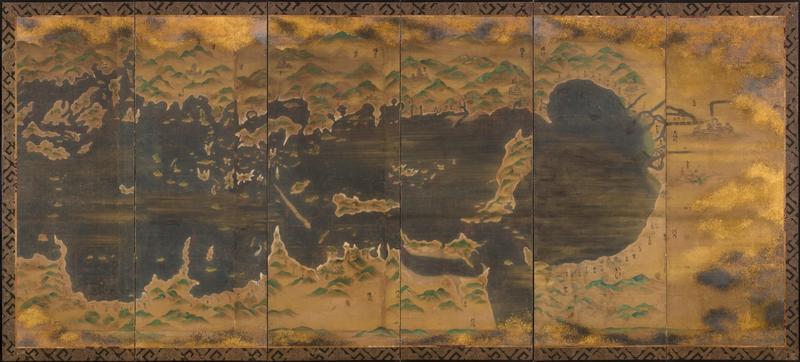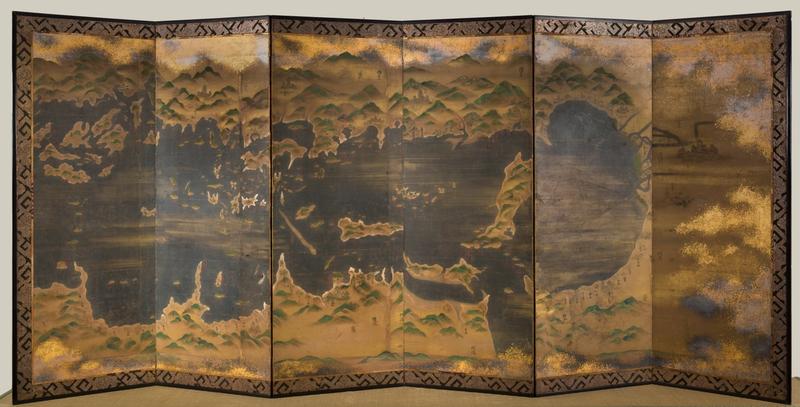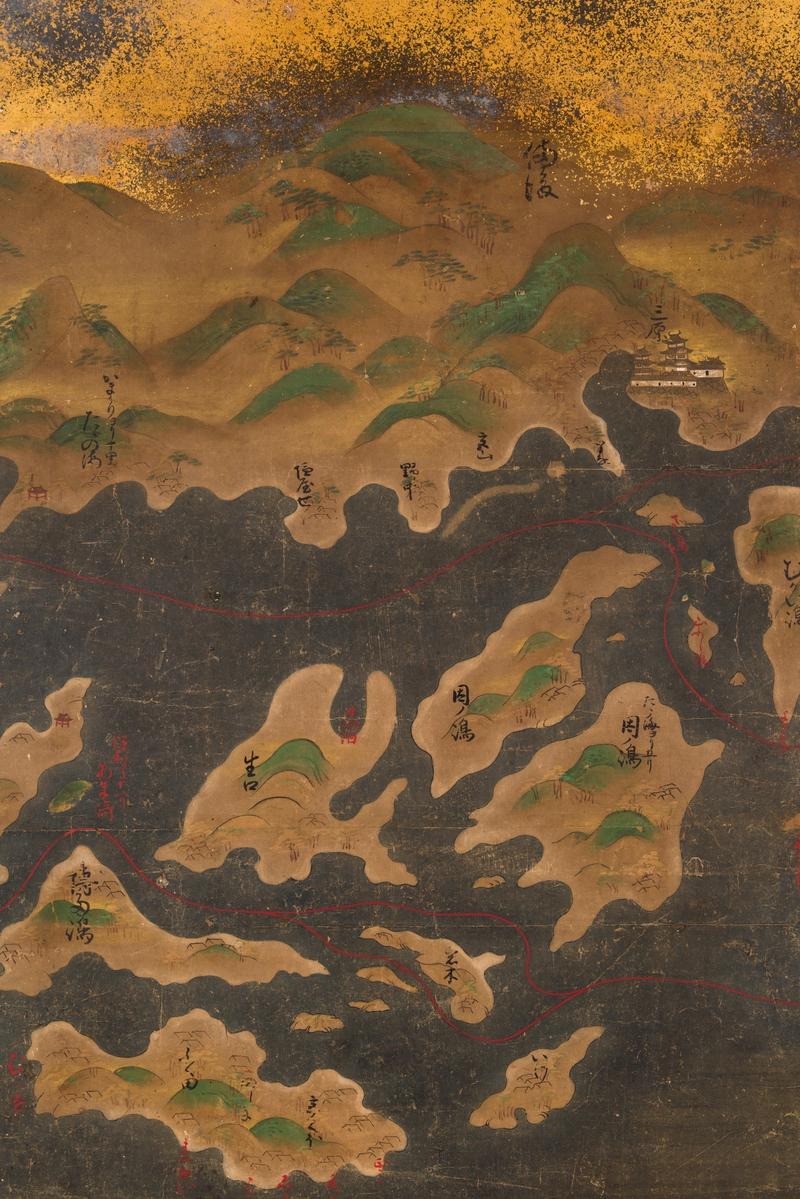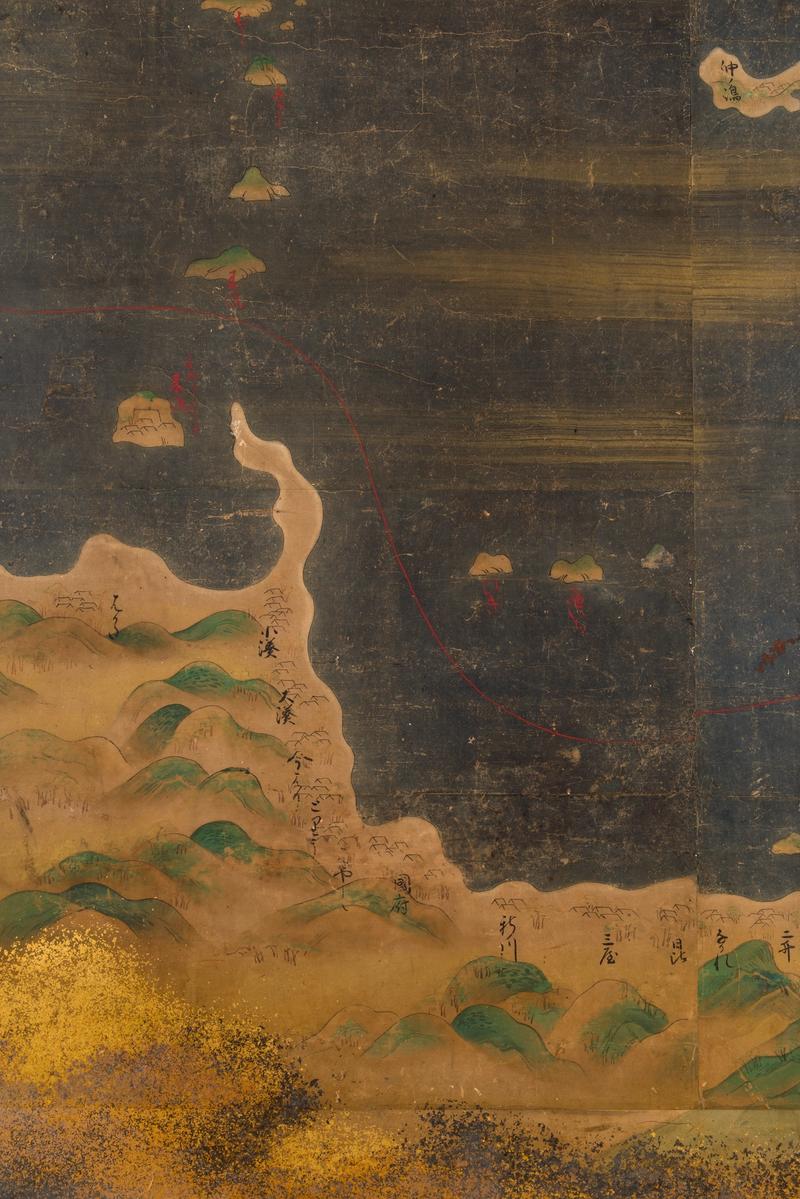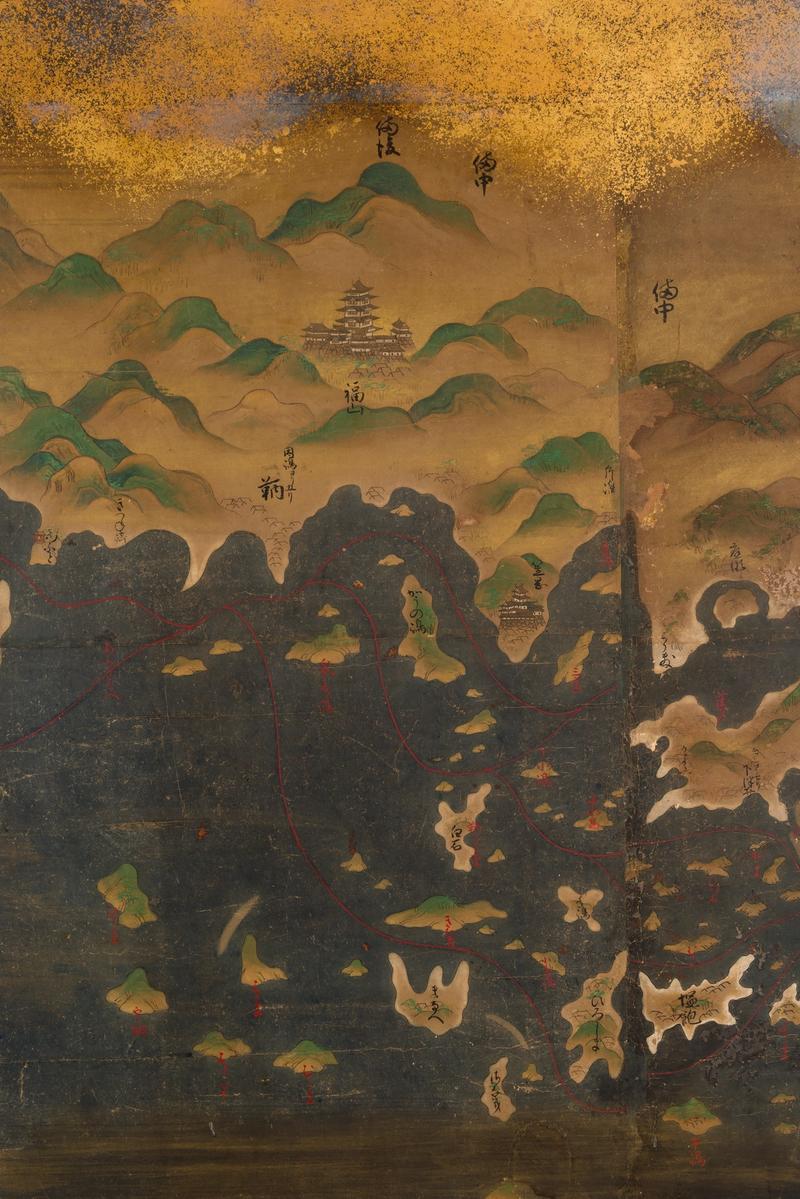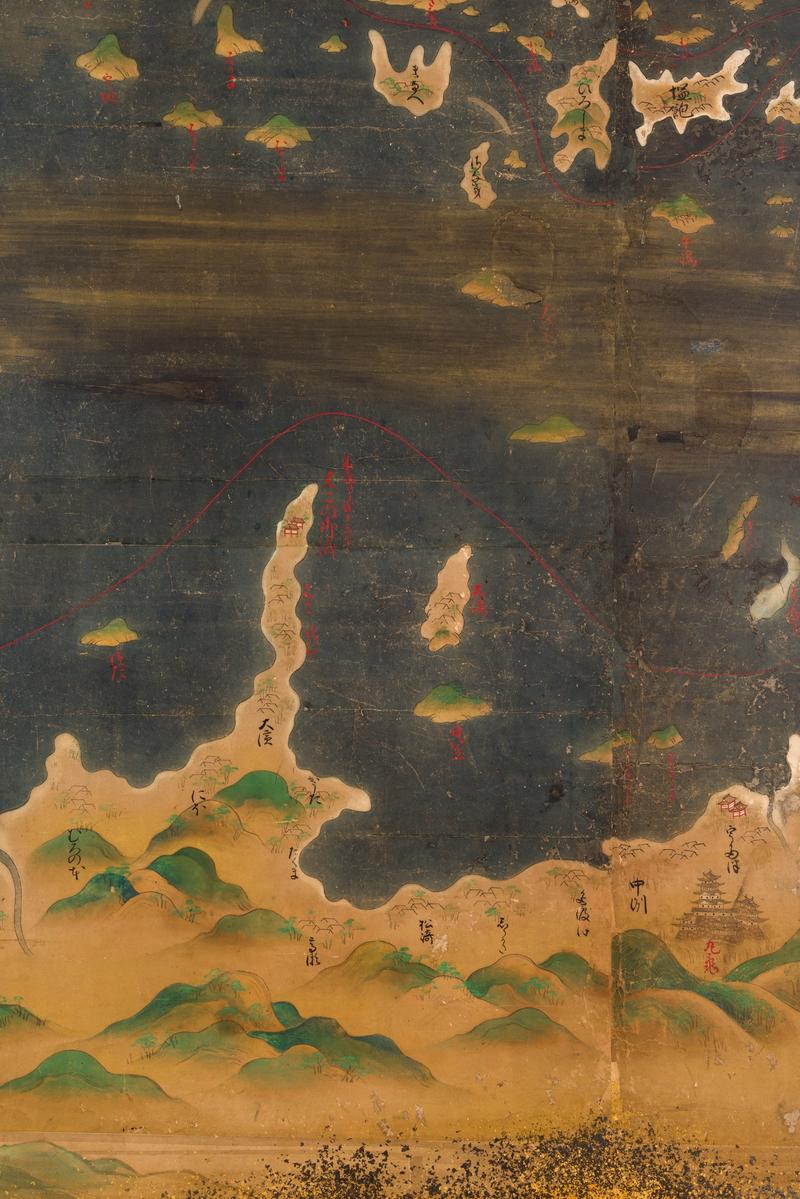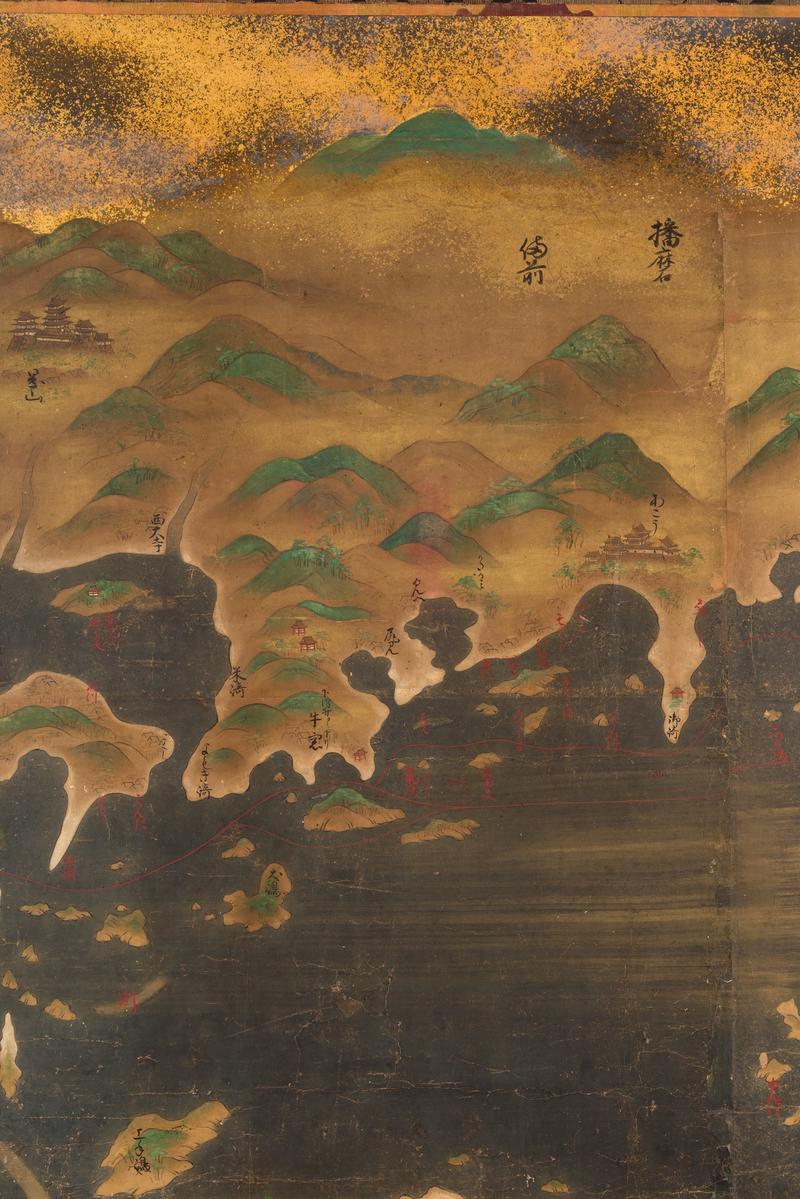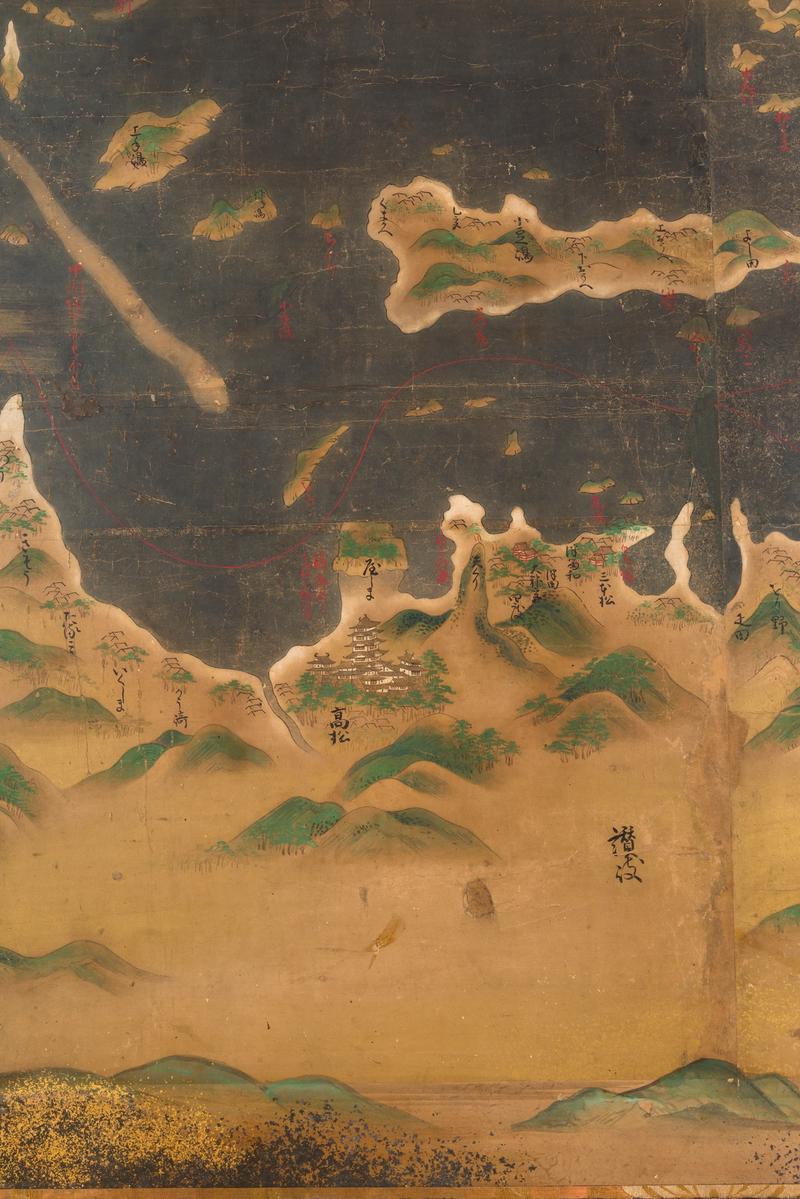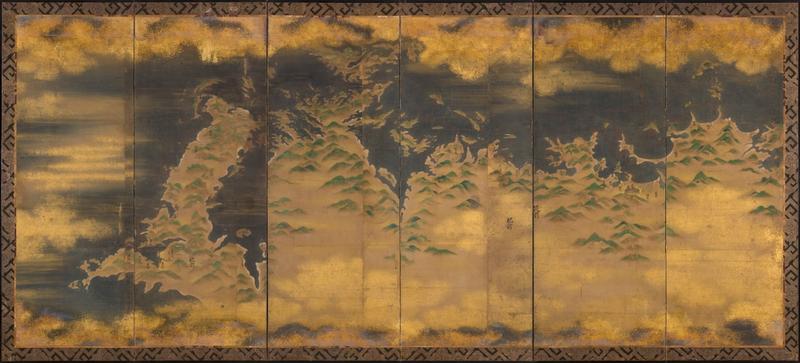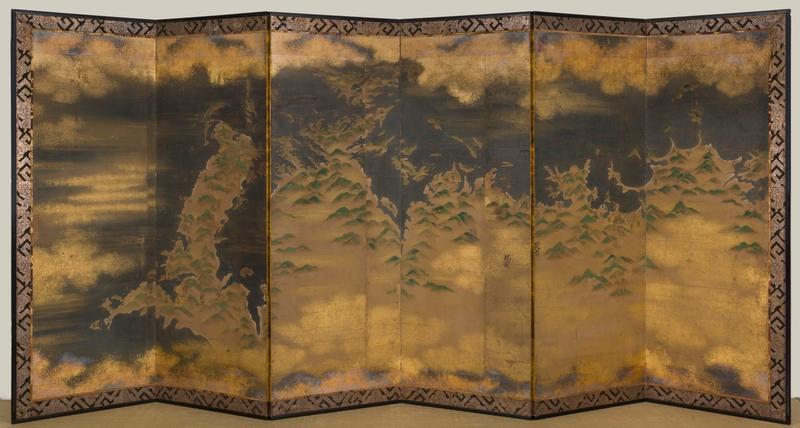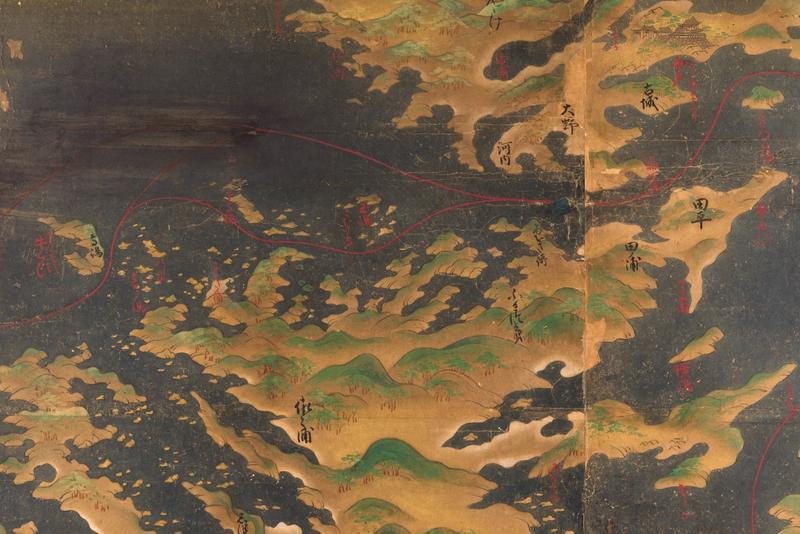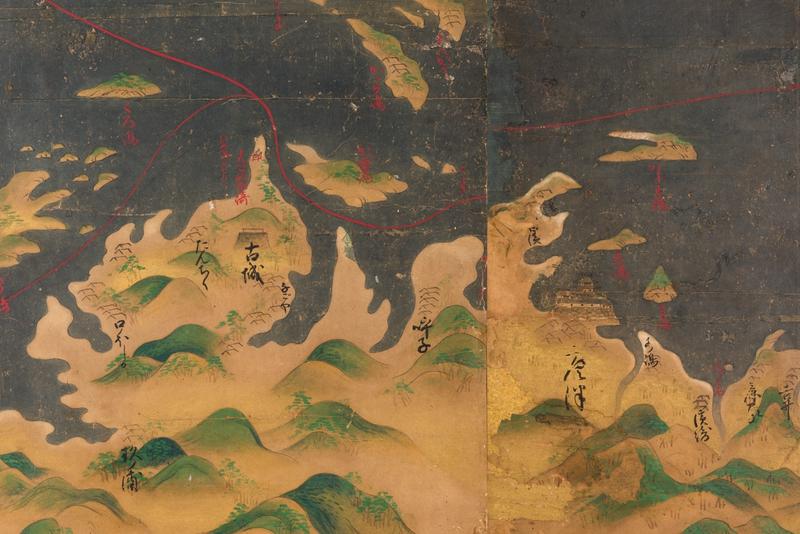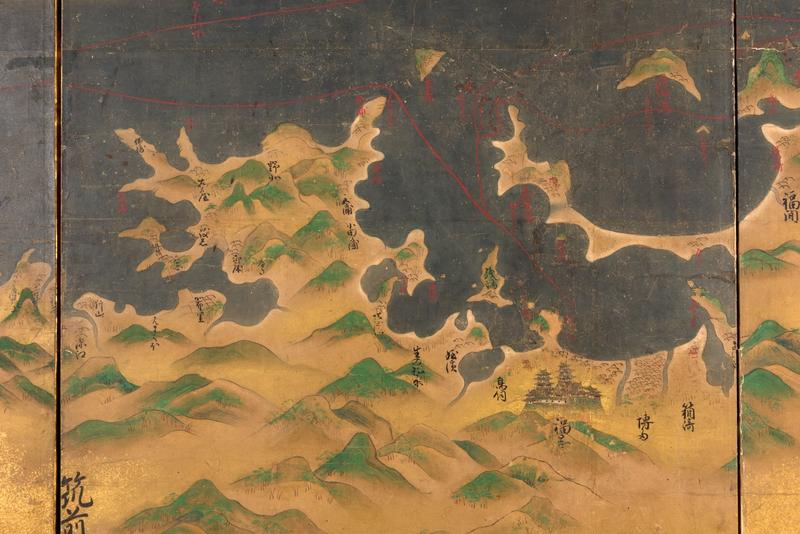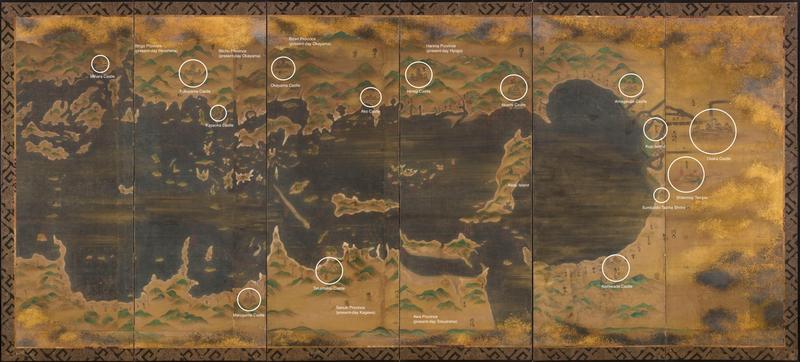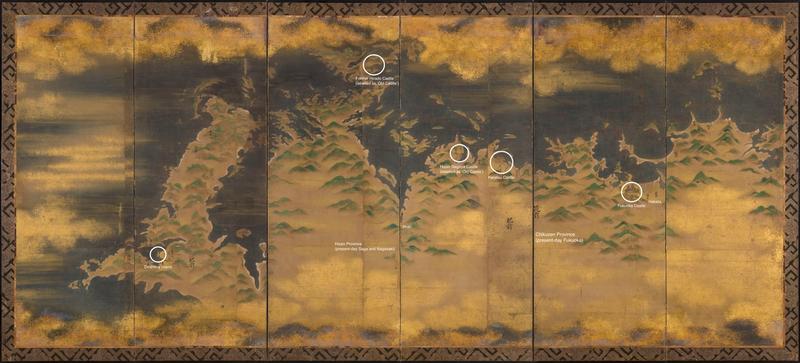A pair of six-fold screens depicting the maritime routes of the Seto Inland Sea and of the north of Kyushu Island
#7801
H. 172cm x W. 378cm (67¾" x 148¾") each
A pair of six-fold screens depicting the maritime routes of the Seto Inland Sea and of the north of Kyushu Island, detailing the coastline and shipping routes from Osaka to Nagasaki.
Japan, mid-late 17th century (probably between c. 1661 and 1665), Edo period
Dimensions: H. 172cm x W. 378cm (67¾" x 148¾") each
Provenance: Private collection, Japan.
Exhibited: Tokubetsu kikaku byōbue-ten [Special exhibition of folding screens], The Kyoto University Museum, 1994, no. 6
Published: Sasaki Jōhei ed., The exhibition catalogue of Tokubetsu kikaku byōbue-ten [Special exhibition of screen paintings], The Kyoto University Museum, 1994, pp. 10-11, no. 6. A copy of this catalogue accompanies these screens.
Map making in Japan is said to have originated with the maps drawn by the Buddhist priest Gyōki (668–749 CE). Maps of Japan depended largely on this original work, up to and during the Edo period (1615–1868). After the arrival of Portuguese ships in the mid-16th century, the curiosity of intellectuals and wealthy merchants for knowledge of the outside world increased and eventually, as a consequence, so did the cartography of Japan. After the introduction of the compass and astrolabe by the Portuguese during the Momoyama period (1573–1615), map making became considerably more accurate. The daimyo Oda Nobunaga (1534–1582) was said to have possessed both a world globe and a world map during his attempt to unify Japan. Unification was later achieved under the leadership of Tokugawa Ieyasu (1543–1616) when he gained power in the early 1600s. Ieyasu understood the importance of accurately recording Japan’s coastline since a great part of the economy depended on coastal marine trade and a small number of large-scale maps were painted on folding screens in addition to folded paper maps and charts in books and albums.
In this pair of panoramic map screens, the trade route from Osaka to Nagasaki is indicated by red lines: the Seto Inland Sea on the right-hand screen and the north of the Kyushu Island on the left-hand screen. The coastlines are annotated with place names with some port cities accompanied by the distance information from the adjacent cities; important places and landmarks such as castles, Buddhist temples and Shinto shrines are illustrated amongst numerous mountains and hills.
The major castles, temples and shrines, and other landmarks depicted on each panel are as follows.
Righthand screen (from right to left)
Panel 1
- Osaka Castle: Founded by Toyotomi Hideyoshi (1537-1598) in 1583, vacated in 1868. Here Osaka Castle is depicted with both a three-storey and a two-storey turret around a five-storey keep, representing the castle at its peak, before a fire raised the keep to the ground in 1665.
- Shitennoji Temple: Founded in 593 CE and known as the first Japanese temple in Buddha’s law.
- Kujo Island: No river runs through Kujo Island facing Osaka Bay in this painting. In 1684 the Aji River was redirected across this island from east to west. The absence of a river in the present example leads us to the reasonable assumption that this screen was painted before this date.
Panel 2
- Sumiyoshi Taisha Shrine: Purportedly established in 211 CE by the empress-regent Jingu, the shrine honours sea gods and Empress Jingu and has appeared in many classical literature works.
- Amagasaki Castle: Founded in 1617 by Toda Ujikane (1576-1655) and vacated in 1873.
- Kishiwada Castle: Founded around 1400 and vacated in 1871. The castle keep was built in 1597.
Panel 3
- Akashi Castle: Founded in 1618 by Ogasawara Tadasane (1596-1667) and vacated in 1874.
- Himeji Castle: Founded in 1346 by Akamatsu Sadanori (1306-1374), vacated and nationalised in 1869. The castle keeps were built in 1580 and 1609.
Panel 4
- Ako Castle: The Ako Castle was built by the Asano clan, with its construction started in 1648 and completed in 1661, and was vacated in 1873. The castle in this painting looks to be after its completion (i.e. in or after c. 1661).
- Takamatsu Castle: Founded in 1590 by Ikoma Chikamasa (1526-1603) and vacated in 1869.
- Okayama Castle: Its construction started in 1346 and was completed in 1369. The four-story castle keep was added in 1597. The castle was vacated in 1873.
Panel 5
- Marugame Castle: Founded in the 14th century, the castle keep was built in 1660 and was vacated in 1871.
- Kasaoka Castle: Founded in mid-16th century and was abandoned in 1619 when the Bitchu Matsuyama Domain was established. However, the screen depicts the Kasaoka Castle without a note ‘old castle’. It is not clear why this is not noted.
- Fukuyama Castle: Founded in 1622 and vacated in 1874
Panel 6
- Mihara Castle: Founded c. 1567 by Kobayakawa Takakage (1533-1597). The year when this castle was vacated is unknown.
Lefthand screen (from right to left)
Panel 2
- Fukuoka Castle: Founded in 1601 and vacated in 1871.
Panel 3
- Karatsu Castle:Founded in 1608 by Terazawa Hirotaka (1563-1633) and vacated in 1871.
- Hizen Nagoya Castle (labelled as ‘Old Castle’): Founded in 1591 by Toyotomi Hideyoshi (1537-1598) and abandoned in 1598 after his death. Later, the castle buildings were destroyed during the Shimabara Rebellion (1637). In this painting, this castle is represented as just a stone-walled base and labelled as ‘Old Castle’.
- Therefore, the castle depicted here should be considered to be after 1637.
Panel 4
- Former Hirado Castle (labelled as ‘Old Castle’): The first Hirado Castle was founded by Matsuura Shigenobu (1549-1614) in 1599 but was burned down in 1613. Later, the currently known Hirado castle was rebuilt in 1704 and abandoned in 1871. As the Hirado Castle is labelled as ‘Old Castle’ in this screen, it can be deduced the castle depicted here is the former Hirado Castle, after 1613 but before 1704.
Panel 5
- Deshima Island: Deshima, an artificial island, was constructed in the bay of Nagasaki in 1634 as a Dutch trading post. Reviewing all the dates associated with the landmarks listed above, especially those underlined, the period when this pair were painted can be narrowed down to between c. 1661 (after Ako Castle was built) and 1665 (before the five-storey keep of Osaka Castle was burned down). Yet, as one cannot deny the possibility that some older landscapes could be included in the painting (e.g. the Kasaoka Castle in this pair), the years when these screens were made might be extended slightly wider. Considering the subject matter, painting style and historical references, one can say these screens were painted in the mid-late 17th century.
Such large maps on screens are certainly decorative and spectacular as well as historically important, indicating the significance of the trade route from Osaka to Nagasaki during the Edo period.Including this pair and the examples below, only a dozen or so screens depicting these trade routes are known today.
For similar examples see:
- a pair of six-fold screens from early 17th century housed in the Osaka Castle Museum, Japan, illustrated in: Claire-Akiko Brisset and Torahiko Terada, et al. eds., Japanese Screens: Through a Break in the Clouds, (New York, 2021), p.72, no. 48 a-b;
- a pair of six-fold screens from 17th century housed in the Maritime Museum of Kobe University, Hyogo, Japan: http://www.museum.maritime.kobe-u.ac.jp/shiryou_det.cgi?shiryou_no=381;
- a pair of six-fold screens from early 18th century housed in the Hyogo Prefectural Museum of History, Japan: https://rekihaku.pref.hyogo.lg.jp/collection/selection/saigoku/;
- a six-fold screen from the Edo period housed in the Sakai City Museum, Osaka, Japan: (no. 1981-016)https://jmapps.ne.jp/sakaihaku/det.html?data_id=101
- a pair of six-fold screens from the early Edo period housed in the Tenri Central Library, Nara, Japan.
n.b. These paintings now presented as a pair of six-fold screens were originally mounted as fusma (sliding doors) and wall panels which would have adorned the interior of an important house, temple or Daimyo castle. There are signs of repair where handles once existed and some of the painting does not fully align due to the original lacquer or wooden frames having been removed before remounting. At the time of remounting, a strip of paper approximately 9cm wide has been added to both the top and bottom of both screens to achieve the desired hight. This addition is disguised with a profusion of silver and gold sunago (sprinkled silver and gold leaf).
There are numerous imperfections and repairs throughout both screens commensurate with age and remounting.
Screens
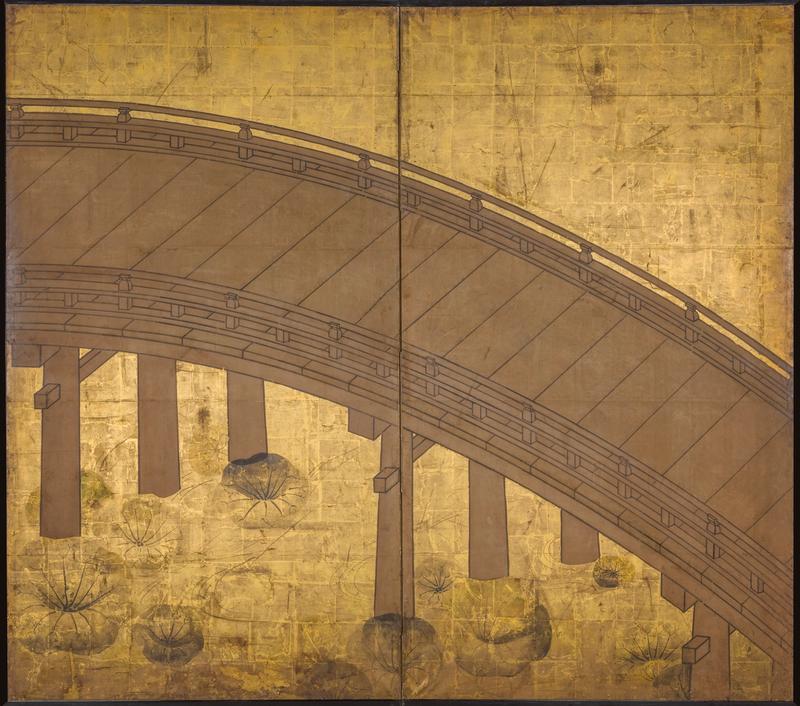
A two-fold screen with the Uji River and its bridge

An eight-fold screen depicting flowers of the four seasons
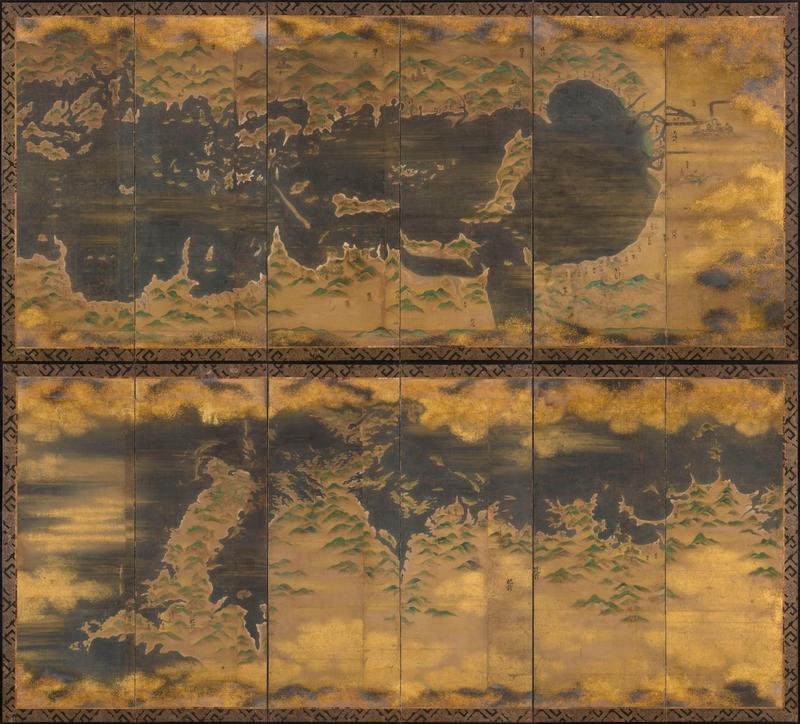
A pair of six-fold screens depicting the maritime routes of the Seto Inland Sea and of the north of Kyushu Island
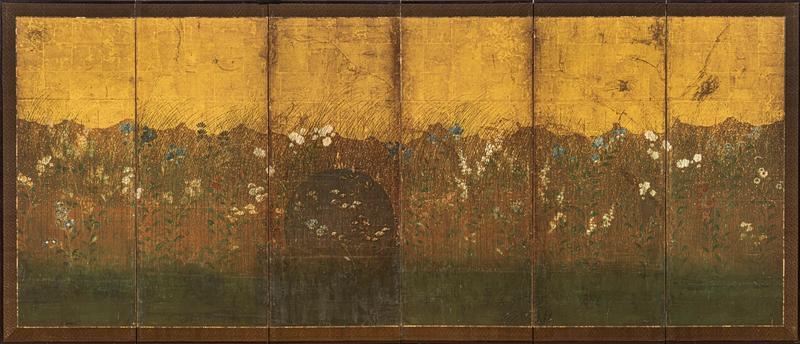
A six-fold paper screen with the Plains at Musashino

A pair of six-fold paper with sweetfish
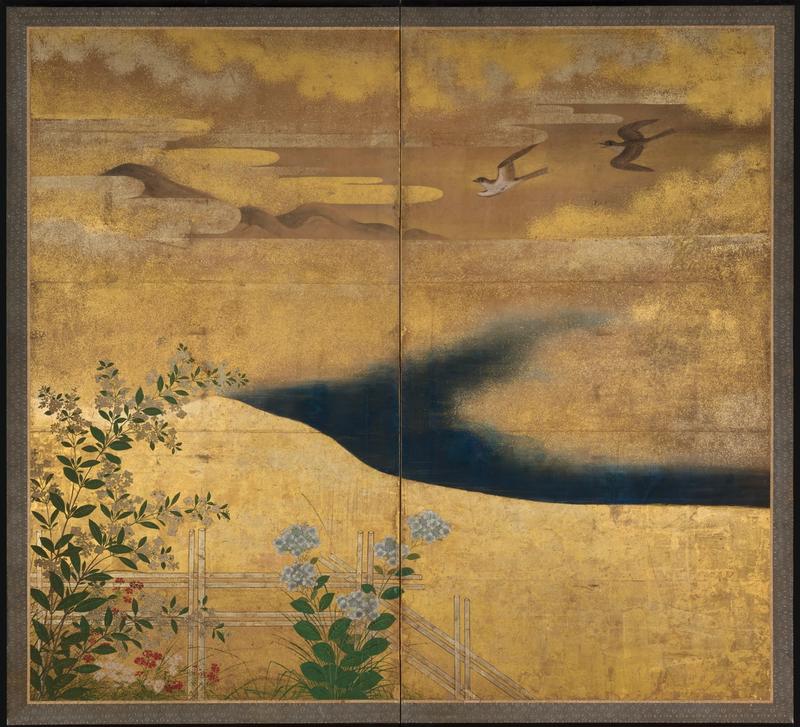
A two-fold screen with a river landscape

A six-fold screen with a covey of uzura and chicks
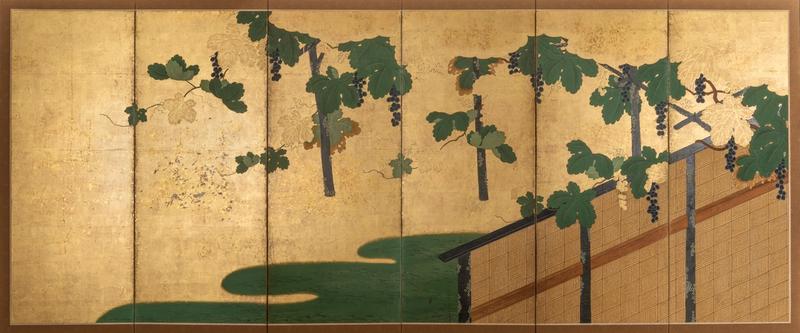
A six-fold screen with grape vines
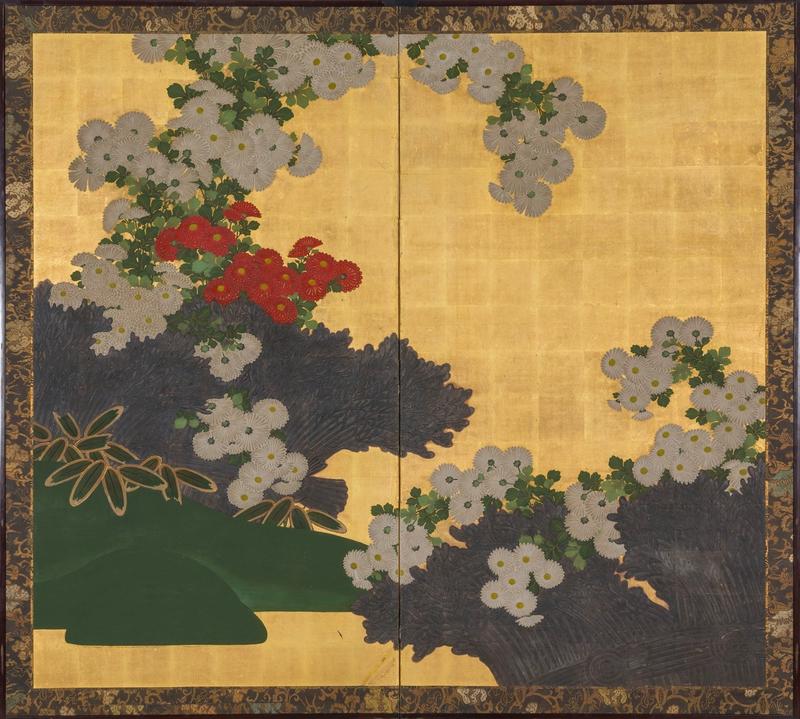
A two-fold screen with chrysanthemums
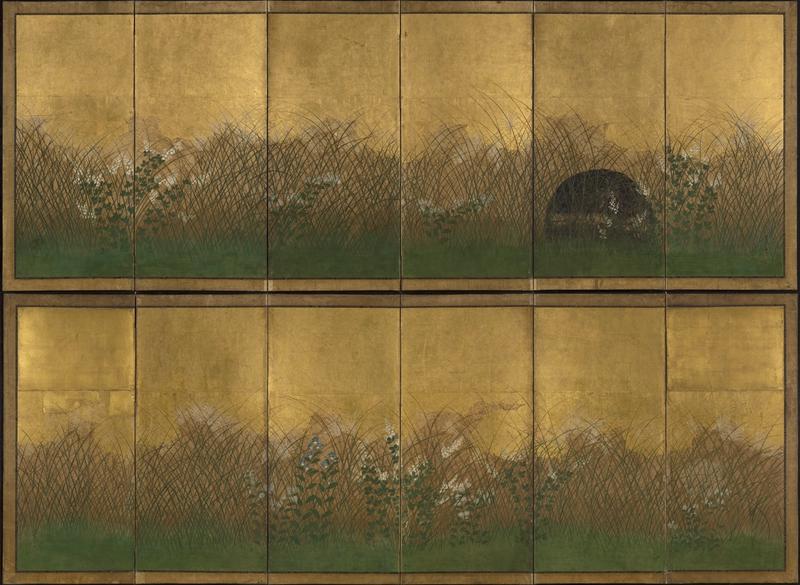
A pair of six-fold paper screens with the Plains at Musashino
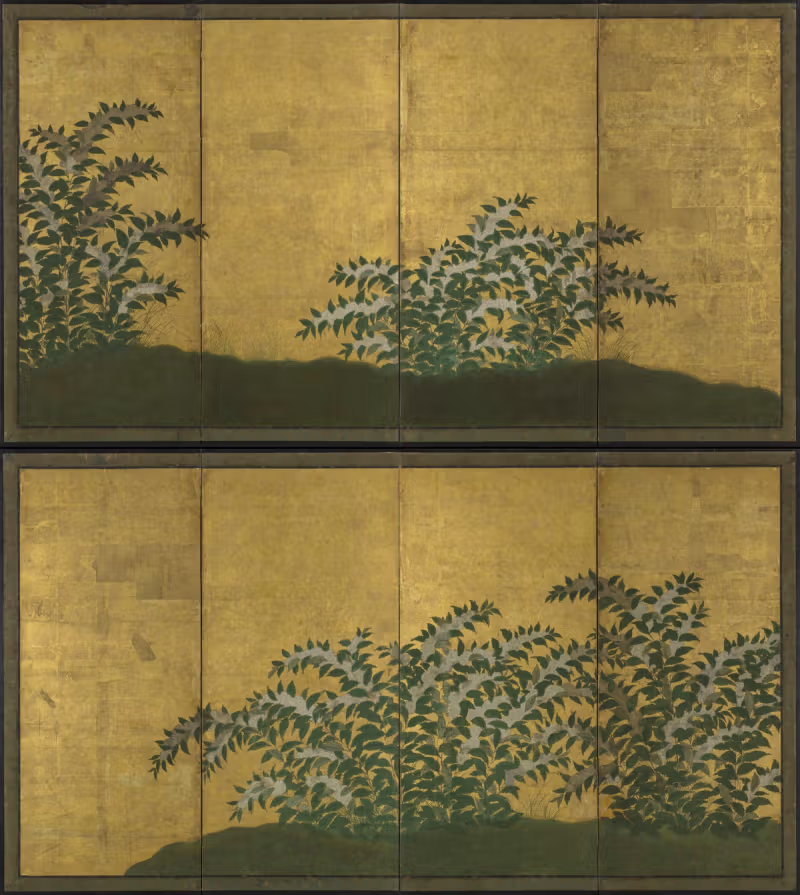
A pair of four-fold screens with kuri flowers
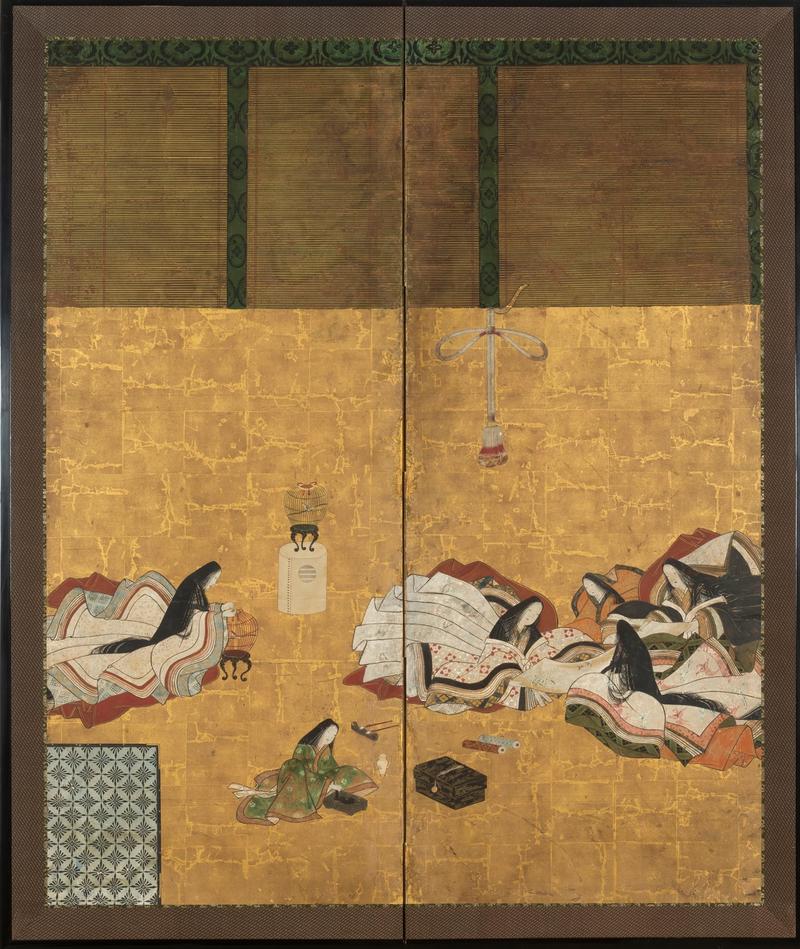
A two-fold screen with court ladies
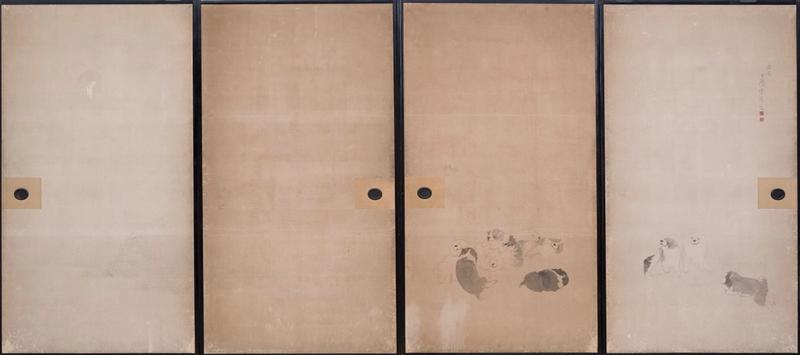
Four fusuma by Nagasawa Rosetsu

A six-fold screen with autumn flowers and grasses
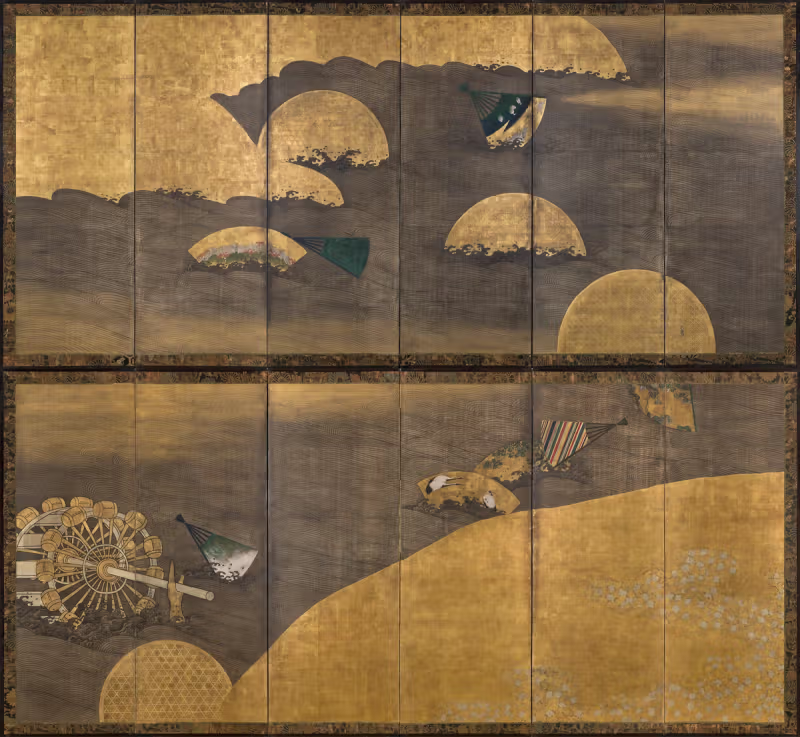
A pair of six-fold screens with scattered fans
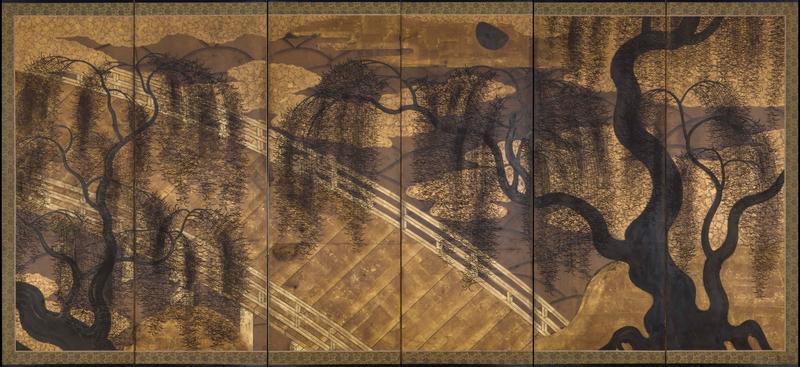
A paper screen with the Uji river and its bridge
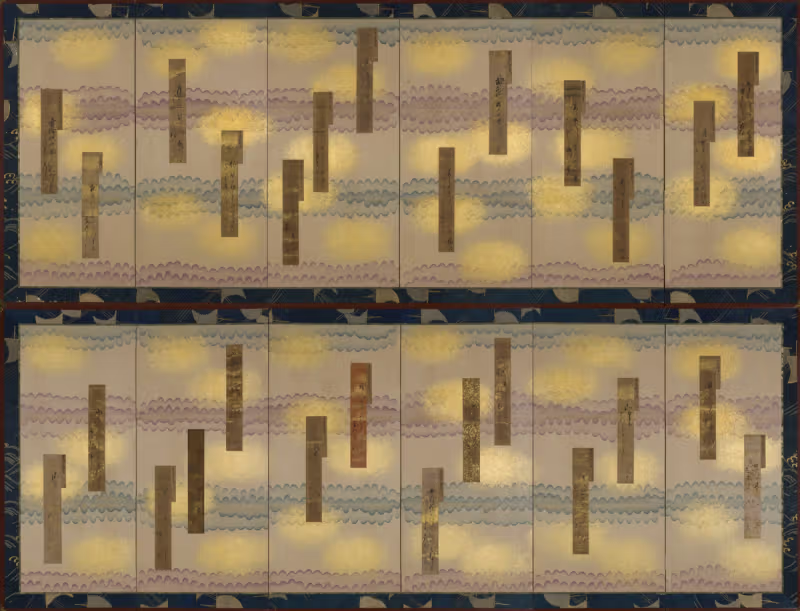
A pair of six-fold screens with poem slips from the 17th century

A pair of six-fold screens depicting ‘One Hundred Boys'
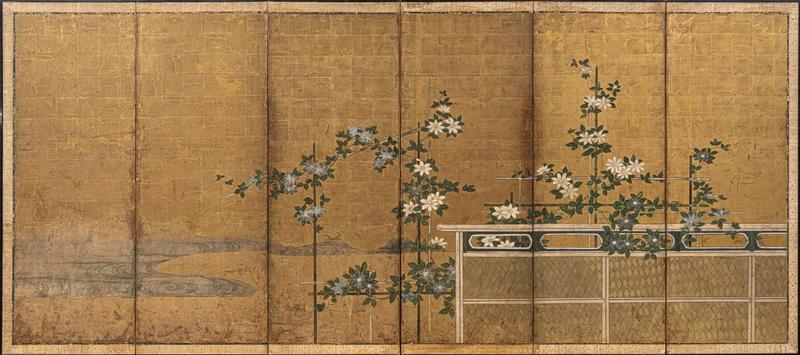
A pair of six-fold screens with clematis
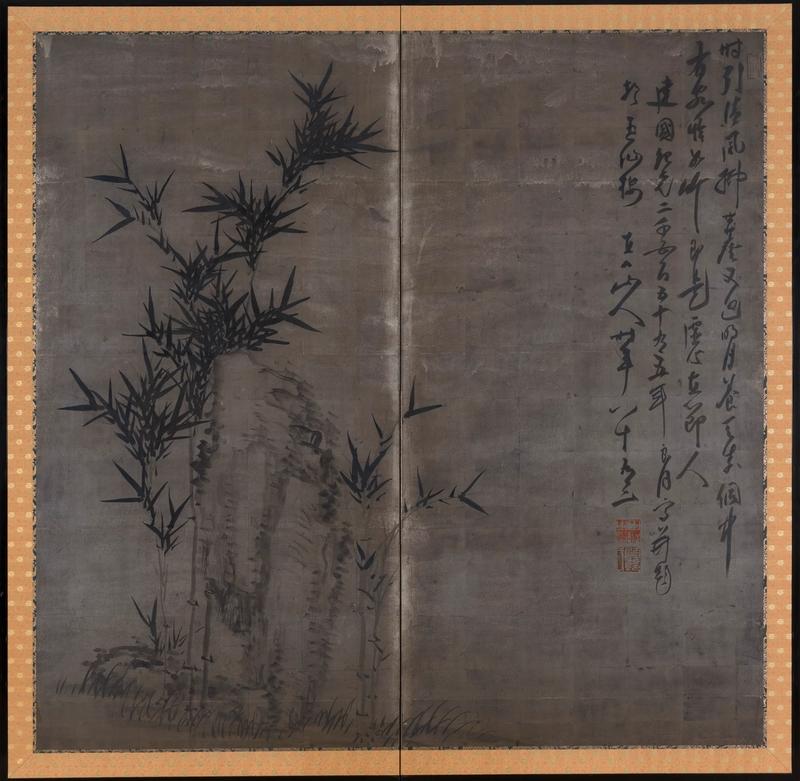
Tanomura Chokunyu - screen painted in ink on a silver ground with a rock, bamboo and calligraphy
